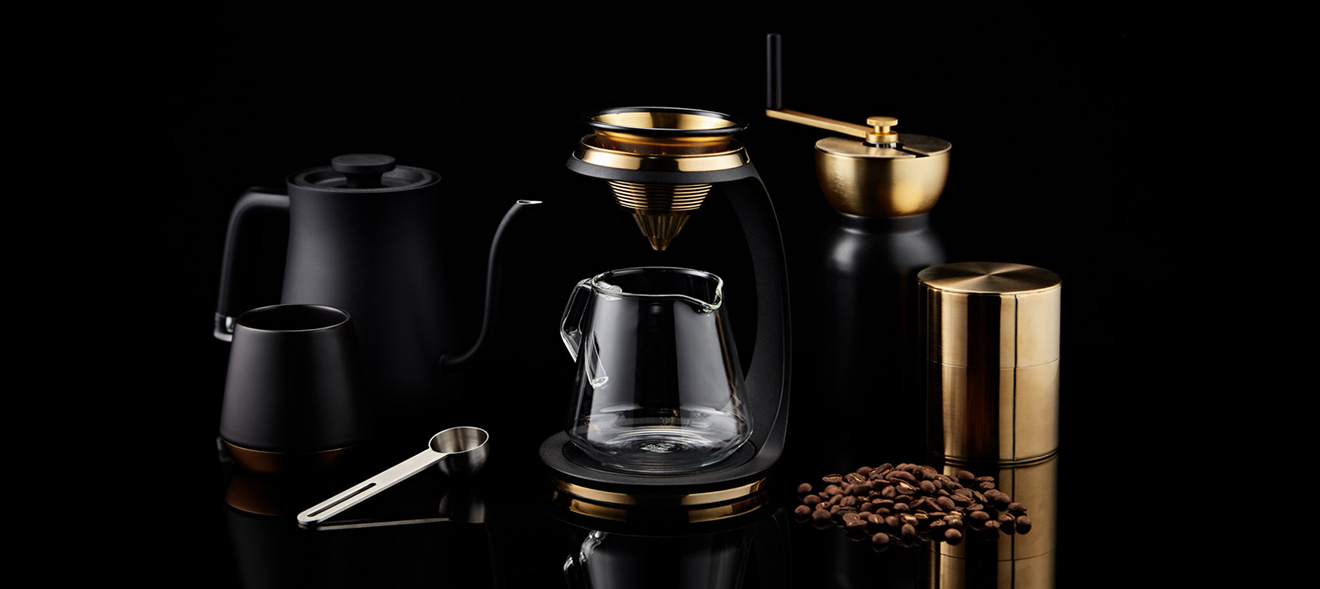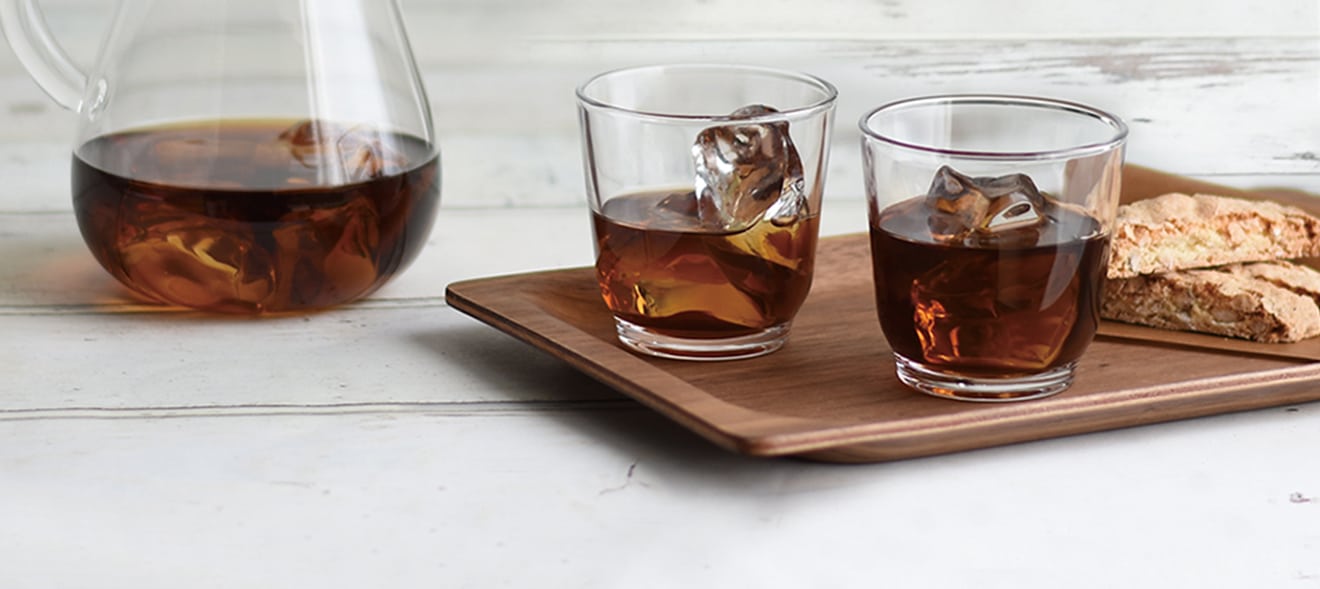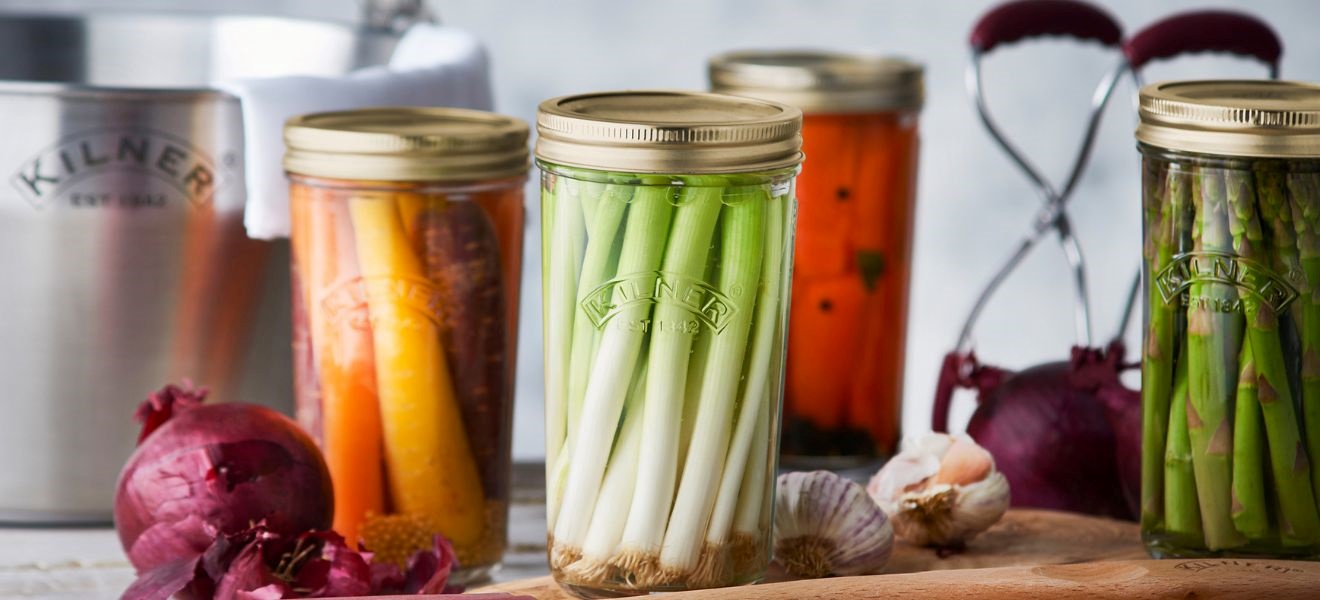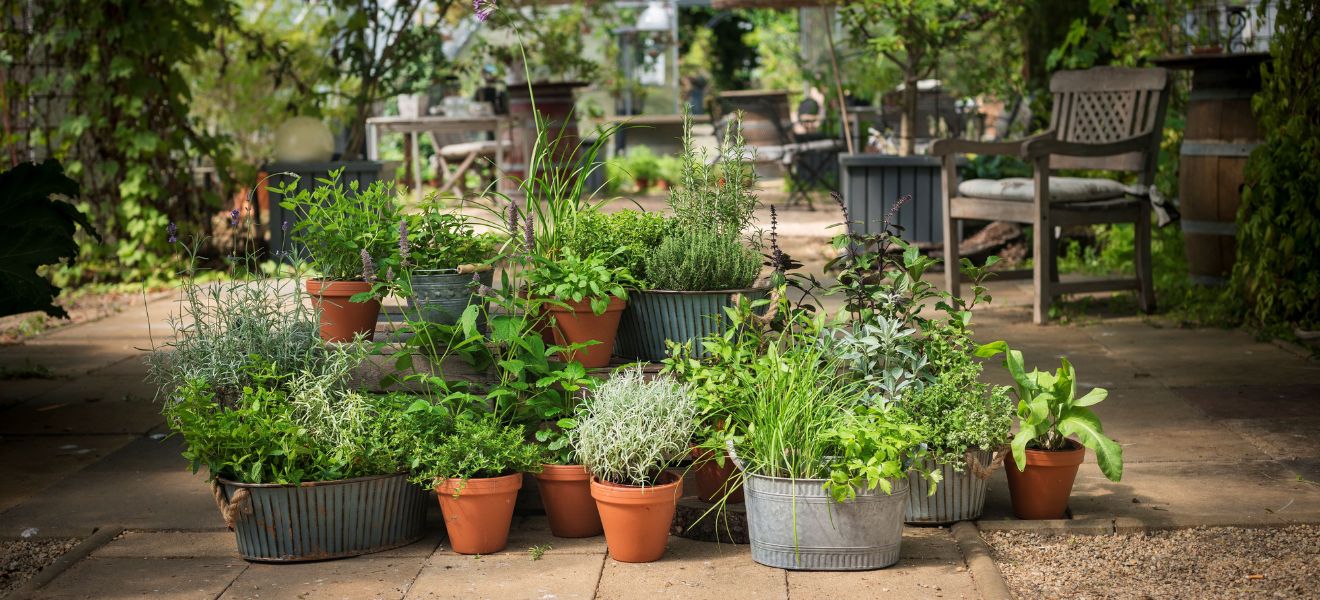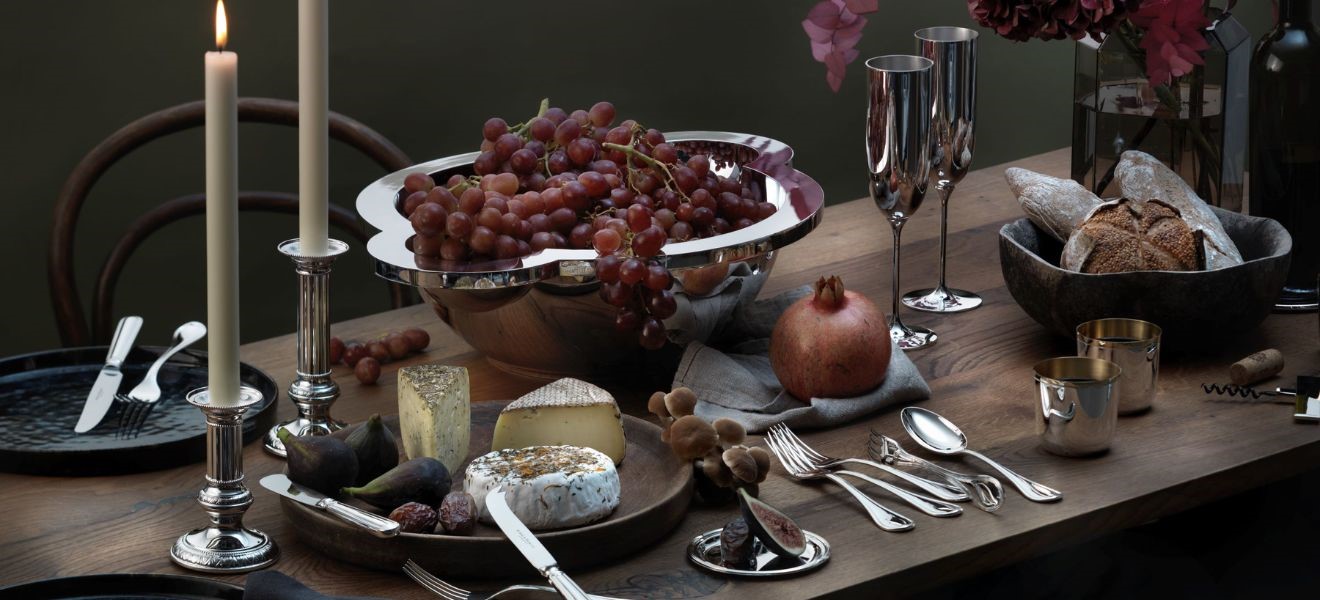What keeps the coffee world moving forward, what makes it so constantly exciting? The answer is a never-ending desire to experiment that generates innovations and sharpens the focus on flavour-intensifying coffee machines, manual coffee filters and brewing methods. “Coffee is now a pretty persistent trend,” state young coffee enthusiasts Julian Ploch and Matthias Hoppenworth. They run a coffee roasting plant and several speciality cafés in Frankfurt, including one in the city’s recently reconstructed ‘New Old Town’ (Neue Altstadt). The two entrepreneurs are well aware that coffee lovers are far more knowledgeable these days – they also appreciate the potential of coffee makers to open up new avenues of flavour. Many paths lead to the perfect coffee. Learn more about exciting technical innovations, coffee makers as design objects and the latest trends!
Filter, filter, filter!
The third coffee wave? Frankfurt coffee pioneer Julian Ploch explains: “The first wave of enthusiasm for coffee came after the Second World War when manual coffee filters started to become widely available. The 1980s saw the second wave with the first coffee shops as we know them today opening in the USA. And in the current third wave, craft coffee is being prepared in a more artisanal way. Craft coffee is not an industrially manufactured mass product – it is primarily about quality, fairness and enjoyment. Also, contrary to expectations, light roasts, which first appeared in the USA and Scandinavia, are a continuing trend. They have a fruity and floral flavour and are not as bitter as the classic Italian roasts. The aromas of the light roasts are perfect for filter coffees, which have undergone a radical change of image.” Manufacturers are responding to this trend and refining the technical equipment, as seen for instance in the numerous new glass manual coffee filters and sophisticated pour-over solutions.

Many of these coffee makers do away with paper filters and the freshly ground coffee passes through a stainless steel coffee filter, as is the case with the height-adjustable coffee maker from AdHoc and the portable cold brew coffee machine from Asubo. Traditional manufacturer Melitta goes one step further by integrating a grinder into its pour-over coffee maker. These systems also meet current demands for zero waste, and some appliances, including the coffee machine from Ritterwerk, feature extremely low-energy brewing processes.

Bella figura: making coffee the Italian way
Excellent filter coffee machines that make coffee that tastes like it’s manually filtered have a very high, optimum brewing temperature of around 96 degrees Celsius. The Cilio coffee filter station uses this method to perfectly tease out the aromas. A rotating water tank pours hot water slowly and evenly over the coffee and enhances the flavour. As with most new models, the emphasis is on a minimalist design with handcrafted precision evident in every detail. And if you’re after a bit of nostalgic flair, look no further than the pastel-coloured, vintage-look coffee machines from Ariete. Visually reminiscent of models from the rock’n’roll era, their inner workings are equipped with state-of-the-art technology. The KitchenAid espresso machine, which makes the preparation of a genuine Italian espresso child’s play, also has a compelling retro look. In essence, what we have here is a smaller barista version of the professional espresso machines that you see so often in cafés. Thanks to its special filter holder system, you can use ground coffee as well as practical coffee pods.

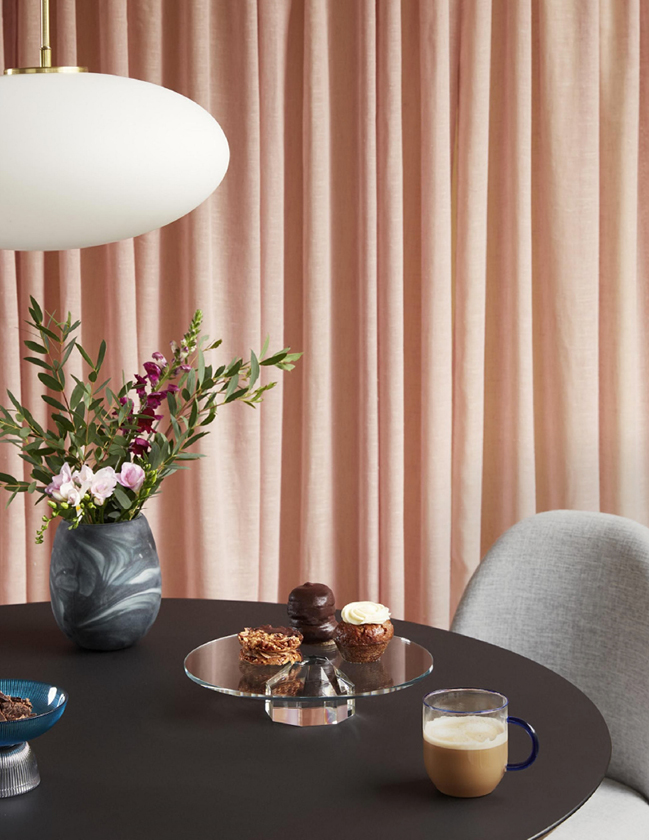

And speaking of things that are small but powerful, the original Clatronic one-cup coffee machine perfectly combines both: it fits in the smallest corner and certainly punches above its weight. The machine comes with a permanent coffee filter and porcelain cup and once you try it, you’ll be hooked on your own daily barista ritual. Alternatively, because time is usually in short supply in the morning, there’s another mini-powerhouse – the slim coffee machine from WMF – that boasts an extremely clever function, a 24-hour timer for a punctual morning cup of coffee. Wake up, smell the coffee, fill the to-go thermal cup and off you go to the office.


Rejuvenated classics – familiar but very, very different
Barista-level coffee makers such as espresso machines, portafilter machines and cafetières are also very popular – due in particular to their flexibility and intelligent design. The French press machine (cafetière) from PO: Selected guarantees that vital to-go aroma with its stylish Easy-Go model which, just like the small Wacaco espresso coffee machine, is perfect for all outdoor activities. The Wacaco machine resembles a sporty torch and takes up a minimum of space as a hiking companion. Small but fine is also the motto of the two-cup Red Heart Bialetti espresso machine, which is an ideal partner on camping trips.
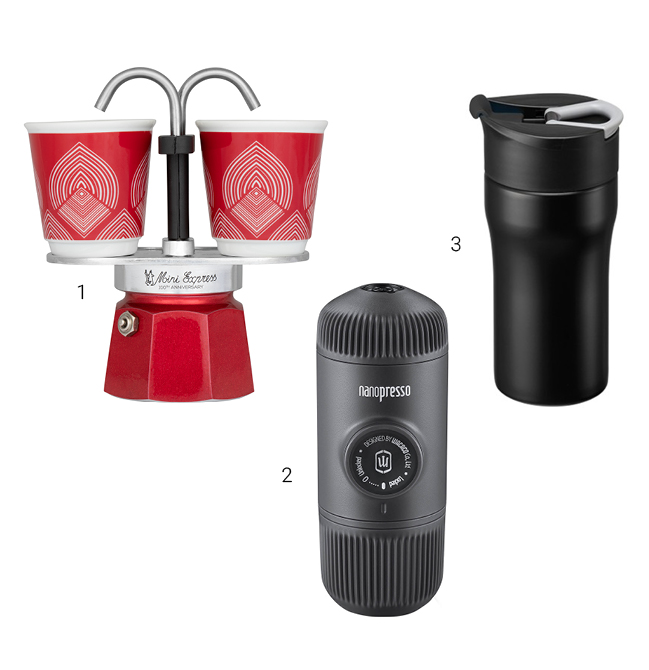
Individuality and aesthetics continue to be very important in all aspects of coffee making – as demonstrated in self-confident fashion by numerous pour-over manual coffee filters and espresso pots. The sensationally futuristic and successful O-Lyfe pour over coffee stand comes in a cast aluminium design and works with either paper or stainless steel coffee filters. The minimalist lines stylishly accentuate the robust material. Similar influences can be seen in various remakes of classics such as the stainless steel espresso maker created for Alessi in 1979 by Munich-based star designer Richard Sapper. The almost raw technical design is reminiscent of the Bauhaus movement and is informed by Sapper’s characteristic desire for practical design, which fits perfectly with the craftsmanship of high-quality coffee making.

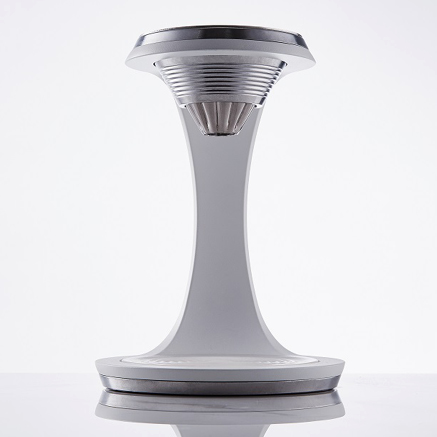

Classic Cona coffee makers with their two piston-like glass containers placed one above the other are celebrating a comeback in this time of new values and deceleration. The vacuum method used in the Cona pot was invented in Germany at the beginning of the 19th century. You need a little patience as the process takes quite some time. Manufacturer Hario now combines the visually sensual vacuum pot system with the principle of the Italian stove-top coffee pot: Here, the coffee grounds are completely infused in water and then filtered through paper, giving the coffee lots of body for a velvety feel on the palate.
Perfectly ground – coffee making for the perfect cup of coffee
We really like the new generation of coffee grinders – an indispensable accessory for the true connoisseur. Whatever the type of coffee machine, you need freshly ground coffee beans turn to create an authentic taste experience. We’re now seeing a move back to the roots here with manual coffee grinders increasing in popularity. Beneath these modern designs is a proven but enhanced system with a user-friendly milling mechanism. The ceramic manual coffee grinder from CrushGrind is a popular example of this type of grinder. By contrast, electric coffee grinders can produce fine or coarse ground coffee with extreme precision and are therefore particularly suitable for grinding espresso beans, as extremely fine coffee grounds are required for espresso makers to function at their best. The German family company Cloer, which has for generations set the benchmark for electric coffee grinders, is well aware of this requirement and its current grinders give extremely homogeneous results. Smeg offers Italian coffee grinders with a retro look and a special feature: the coffee beans can be ground either electrically or manually, something that aficionados in search of the best signature coffee will appreciate.

Lateral thinkers and energy savers
Whenever you start to think that all possible mechanical refinements and resource-saving options have been found, the manufacturers of coffee machines come up with another remarkable innovation. The best example of this is the world’s first portable all-in-one coffee machine from Korean manufacturer Cafflano, consisting of a ceramic grinder, pour-over aid in the lid, filter and cup. The foldable grinder handle disappears into the lid to save space, and the modular design with twist lock means that all parts can be unscrewed individually and quickly assembled and cleaned. In short: a complete, feather-light coffee brewery for on the go. Another clever development is the Twist Press from Barista & Co., which combines the pour-over method with pressure brewing using a simple manual twist motion. Finally, the Studio Aroma from Israel has created this energy-saving winner. It’s the first non-electric moka pot for coffee capsules and is unbeatable in terms of convenience and energy consumption.

Dalgona, nitro and more – traditional meets experimental
At the moment, Korean dalgona coffee – an airy whipped beverage made from soluble coffee grounds with lots of sugar on ice-cold or warm milk – is riding the wave as the on-trend drink thanks to TikTok and Instagram. Julian Ploch is rather sceptical: “We’ll have to see whether Dalgona coffee is here to stay.” In his cafés, which are eager to experiment and keep their finger on the pulse of young coffee lovers, another trend has long since become standard: “Flat white, i.e. with lots of micro-foam milk, is how we serve every cappuccino. We adapt trends to our tastes. In the USA, for example, cold coffee drinks are very successful. We also offer cold coffee, but we don’t brew it cold, we brew it hot and then chill it.” However, coffee doesn’t just have to taste good, it also has to be photogenic to be successful: Take nitro coffee, for example, the nitrogen-charged cold brew that looks so much like a freshly poured beer. “Visually, it looks great. People still ask us for nitro coffee, but the trend is past its peak,” states Julian Ploch.


The future of coffee making
Things could get difficult for coffee. With decreasing rainfall as a result of climate change, scientists expect more challenging conditions for coffee growing. For some time now, food scientists and biochemists have been looking for alternatives to the conventional coffee bean. One promising result of this research is Atomo coffee, a molecular coffee made from other foodstuffs such as sunflower seed husks, roasted date kernels and sesame seeds. This young pretender may not actually be coffee, but it smells and tastes like it. “The concept of coffee will remain in the future, even if the beverage will no longer have the huge importance it has today,” states Julian Ploch. Our prognosis: More climate-robust coffee varieties or alternative raw materials could make it necessary to use different brewing processes. Coffee machines and manual coffee filters will respond to these developments, with an even stronger focus on sustainability and pure, unadulterated luxury. “The large fully automatic coffee machines we see in kitchens and offices today take a long time to start up and make a single espresso. These will certainly make way for more compact and energy-saving solutions,” says coffee expert Julian Ploch. Moreover, recycled plastic and other resource-saving materials could become the norm for coffee makers. Presumably, preparation and coffee drinking rituals will also change in line with our lifestyles over the next few decades. But one thing is certain: a future without coffee is unimaginable.
Title: O-Lyfe
